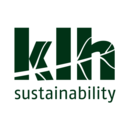Time to face up: Modern slavery in the construction industry
Modern slavery, which includes forced labour and human trafficking, is embedded in the workings of the global economy. It is a form of organised crime based on profiting from the exploitation of vulnerable people. Whilst it is easy to think of modern slavery as something that is “out there” – in the mines of India, clothes factories of Bangladesh and construction sites of Qatar – the reality is that it pervades much closer to home.
In the UK construction industry, an area of particular vulnerability to modern slavery is labour employed through sub-contractors or agents. Whilst it may seem difficult to impact practices in locations far down the supply chain, responsible recruitment is an area where contractors and suppliers can take action right on their doorstep. Background checks on agencies should be part of the standard protocol. Talk to staff, especially agency workers, to check that they haven’t had to pay fees to secure employment.
It’s important to implement procedures for ensuring that you know who is on your construction site and be able to identify warning signs. The factsheet for construction describes several of these warning signs, including asocial behaviour, malnourished appearance or even a single bank account for multiple wage payments. People who are trapped in modern slavery are often vulnerable and not likely to assert their rights. It is therefore important to encourage open dialogue with workers and an environment where they feel safe to confide. Talk to people; it’s at the human level that we need to engage to tackle this problem.
Another key message was that the purpose of the MSA Statement is not for companies to claim to be free of modern slavery, but demonstrate that they understand the issue and are taking action to address it. It’s about knowing the areas of risk in your company activities and supply chain and being committed to improvement. The Act has been formulated with the intention of fostering open and honest introspection without the threat of prosecution. It seems to acknowledge that admitting that you have a problem is the first step towards solving it. The trick will be moving from cleverly worded statements with all the right buzzwords to real action in tackling this issue. This sounds like the challenge facing sustainability more broadly! Like sustainability, what really matters is the action that’s behind the statement.
Since the MSA only came into force, it is yet to prove itself and demonstrate how it converts intention into action. The Act is surely a step in the right direction and will hopefully be a catalyst in the global sphere – since the supply chain is global! Kevin Hyland OBE summarised the challenge that we face by quoting the abolitionist William Wilberforce: “You may choose to look the other way, but you can never say again that you did not know.” In the construction industry, we know that there is a risk of modern slavery. What do we choose to do about it?
[edit] Related articles on Designing Buildings Wiki
- Building a fairer system: Tackling modern day slavery.
- Construction recruitment agency.
- Ethical labour sourcing standard.
- Ethical sourcing.
- Ethics in construction.
- Gangmaster.
- Gangmasters and Labour Abuse Authority (GLAA).
- Modern slavery.
- Modern Slavery Act and sustainable supply chains.
- Modern slavery and the supply chain.
- Modern slavery toolkit.
Featured articles and news
One of the most impressive Victorian architects. Book review.
RTPI leader to become new CIOB Chief Executive Officer
Dr Victoria Hills MRTPI, FICE to take over after Caroline Gumble’s departure.
Social and affordable housing, a long term plan for delivery
The “Delivering a Decade of Renewal for Social and Affordable Housing” strategy sets out future path.
A change to adoptive architecture
Effects of global weather warming on architectural detailing, material choice and human interaction.
The proposed publicly owned and backed subsidiary of Homes England, to facilitate new homes.
How big is the problem and what can we do to mitigate the effects?
Overheating guidance and tools for building designers
A number of cool guides to help with the heat.
The UK's Modern Industrial Strategy: A 10 year plan
Previous consultation criticism, current key elements and general support with some persisting reservations.
Building Safety Regulator reforms
New roles, new staff and a new fast track service pave the way for a single construction regulator.
Architectural Technologist CPDs and Communications
CIAT CPD… and how you can do it!
Cooling centres and cool spaces
Managing extreme heat in cities by directing the public to places for heat stress relief and water sources.
Winter gardens: A brief history and warm variations
Extending the season with glass in different forms and terms.
Restoring Great Yarmouth's Winter Gardens
Transforming one of the least sustainable constructions imaginable.
Construction Skills Mission Board launch sector drive
Newly formed government and industry collaboration set strategy for recruiting an additional 100,000 construction workers a year.
New Architects Code comes into effect in September 2025
ARB Architects Code of Conduct and Practice available with ongoing consultation regarding guidance.
Welsh Skills Body (Medr) launches ambitious plan
The new skills body brings together funding and regulation of tertiary education and research for the devolved nation.
Paul Gandy FCIOB announced as next CIOB President
Former Tilbury Douglas CEO takes helm.























